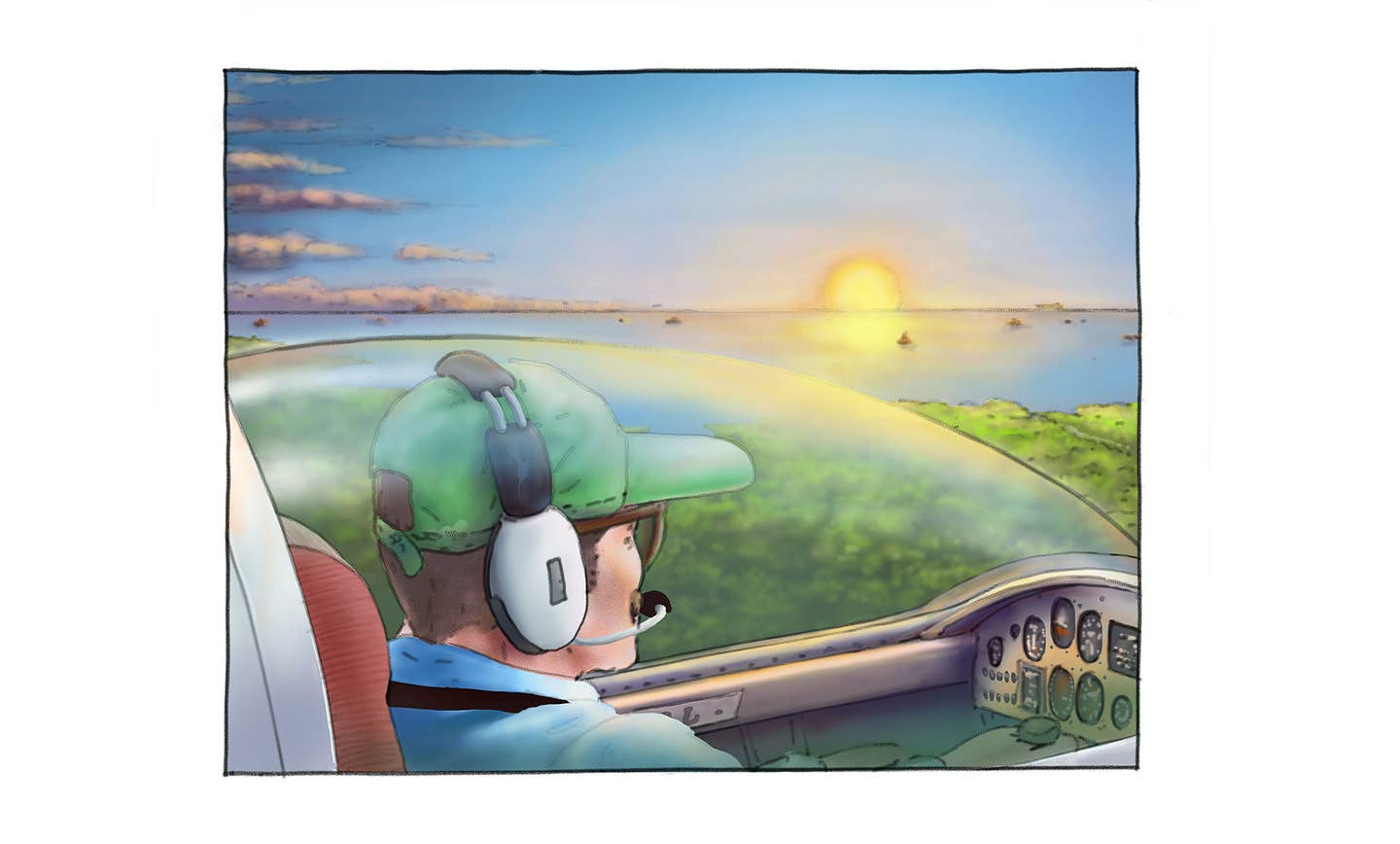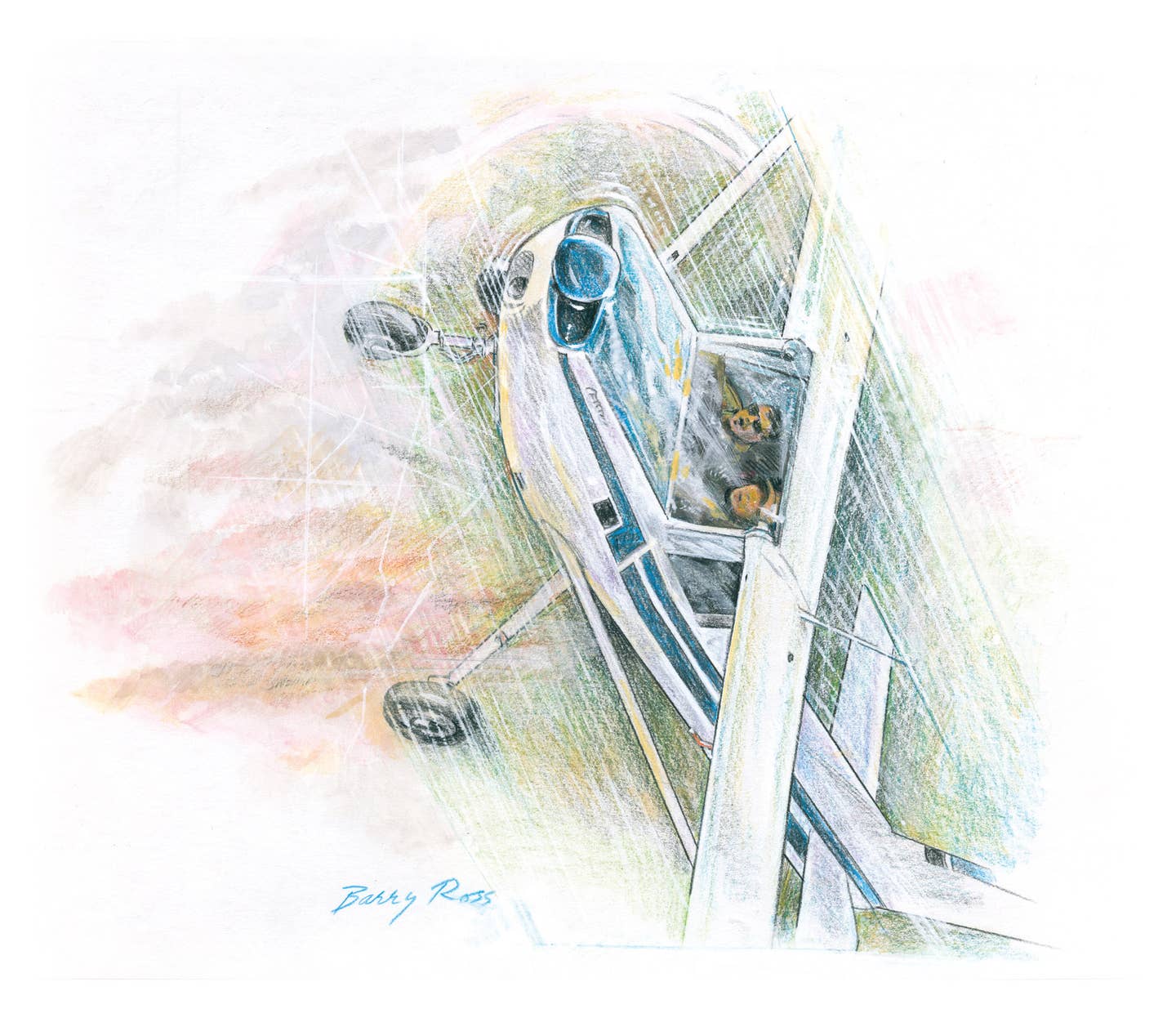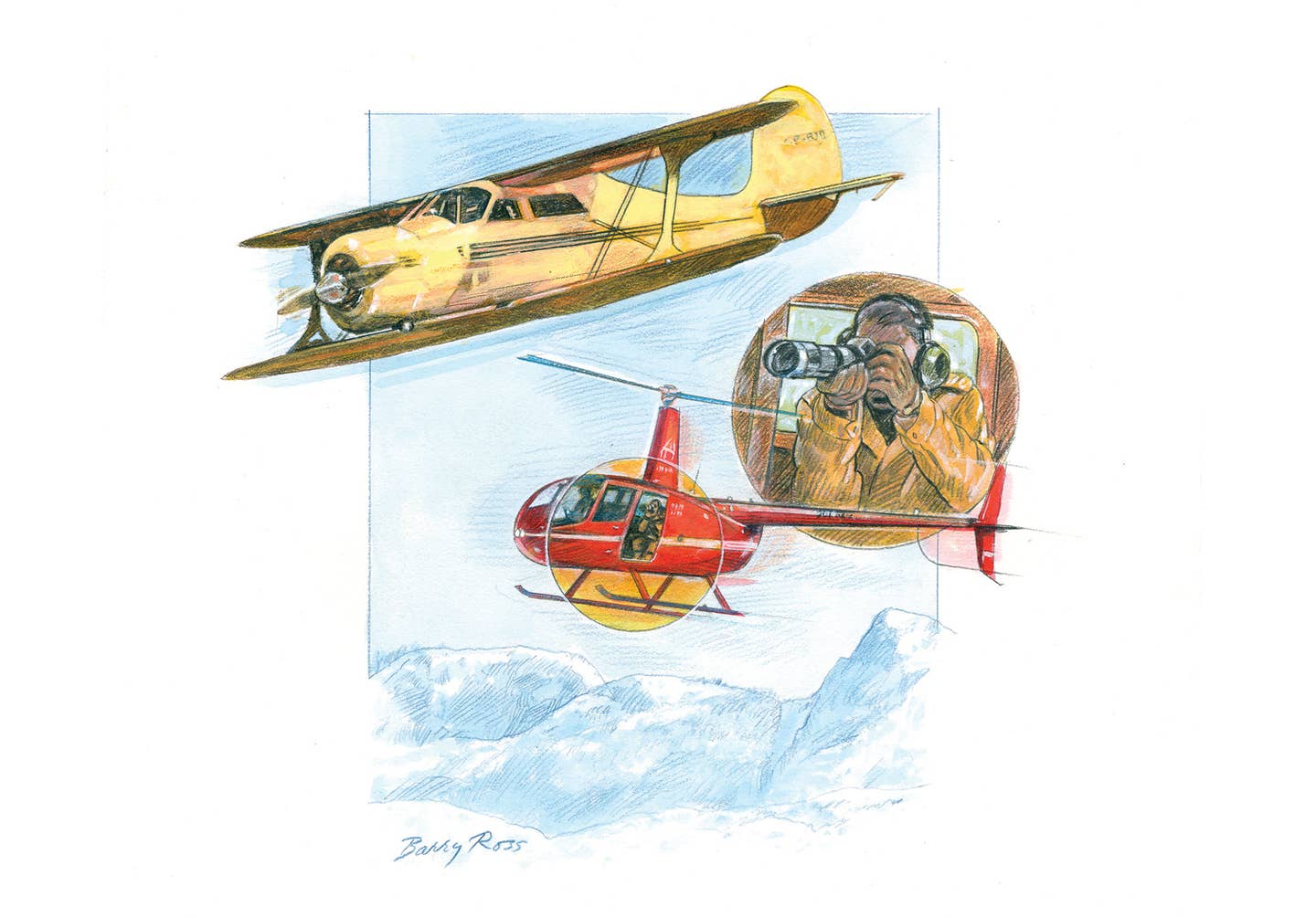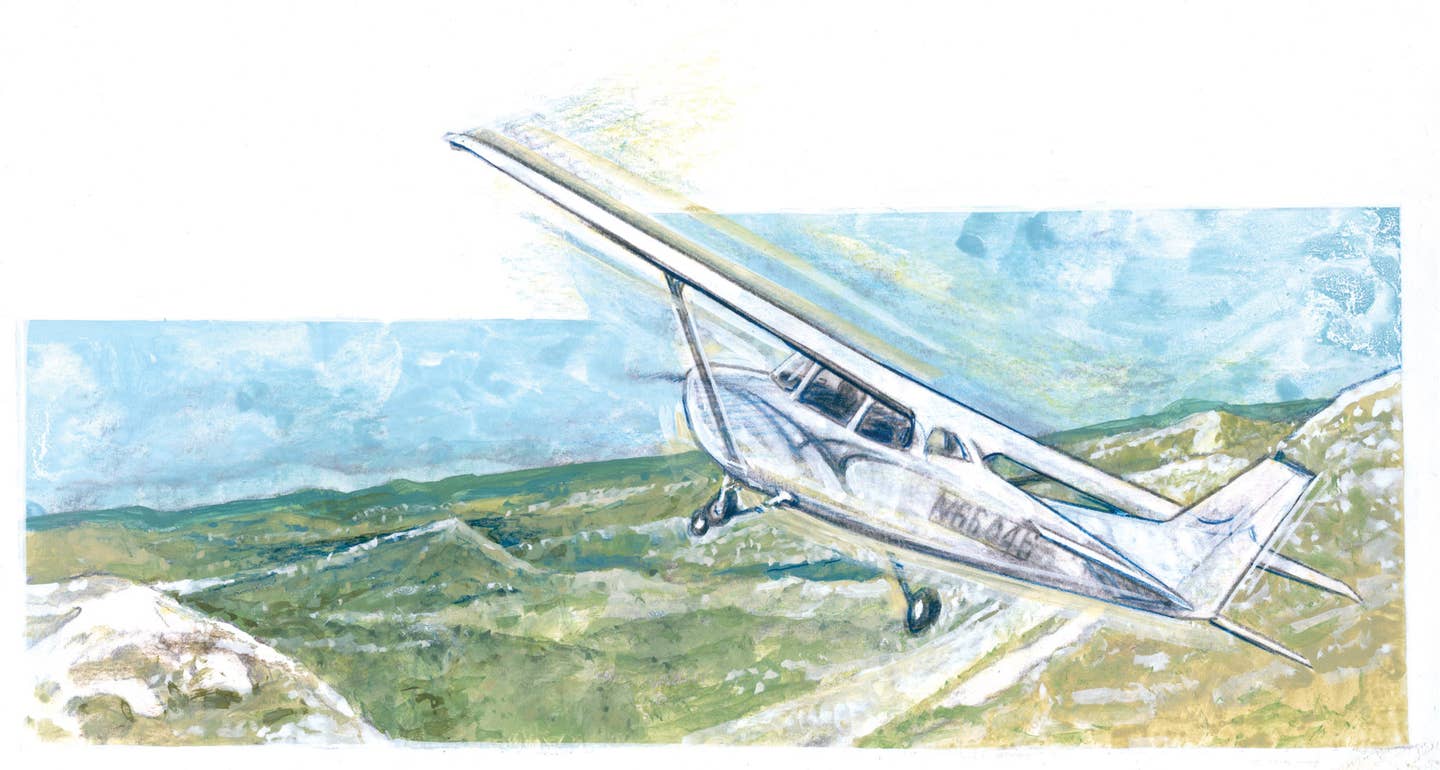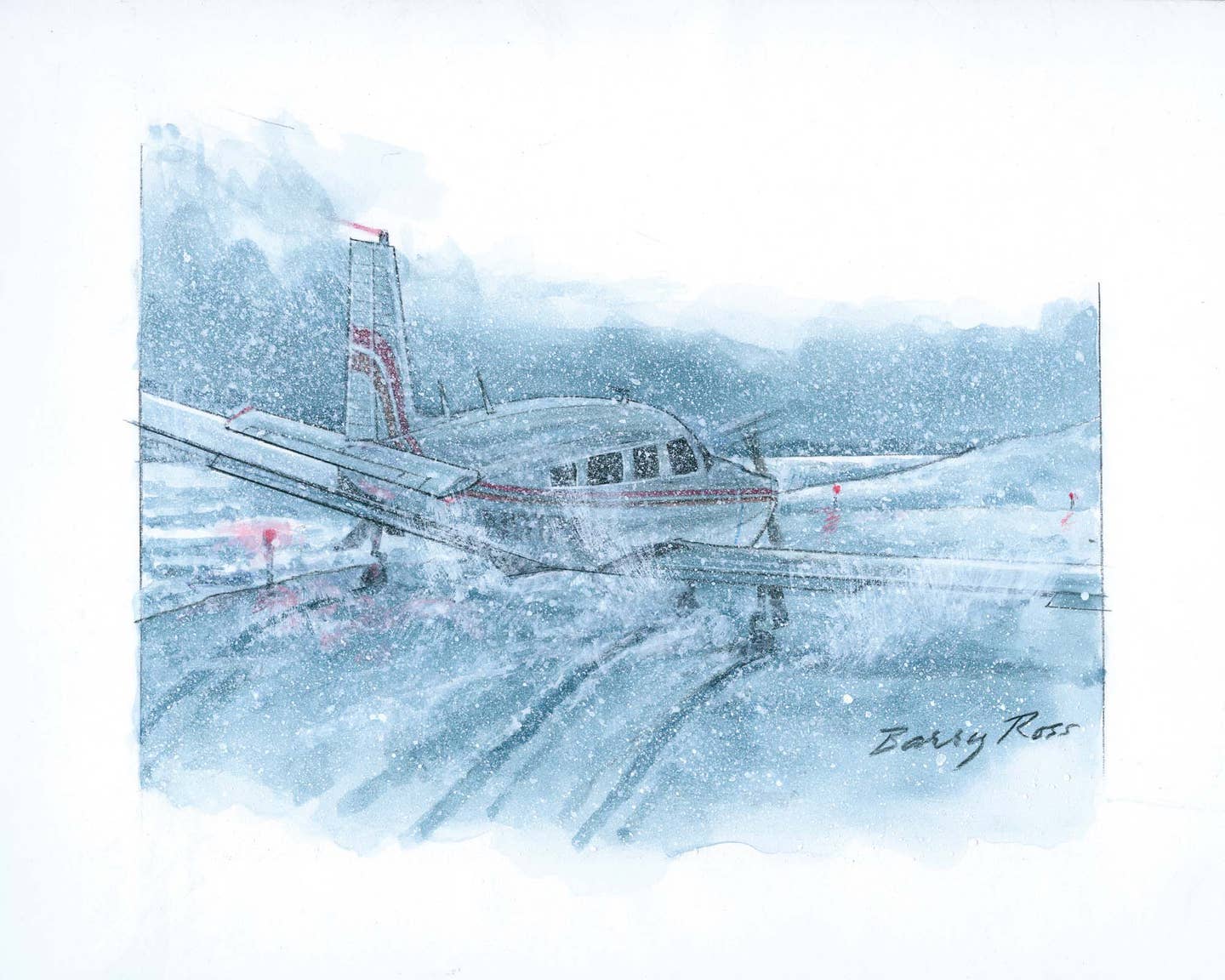No One Is Flying
Two pilot heads should be better than one when gear issues strike a Piper Arrow
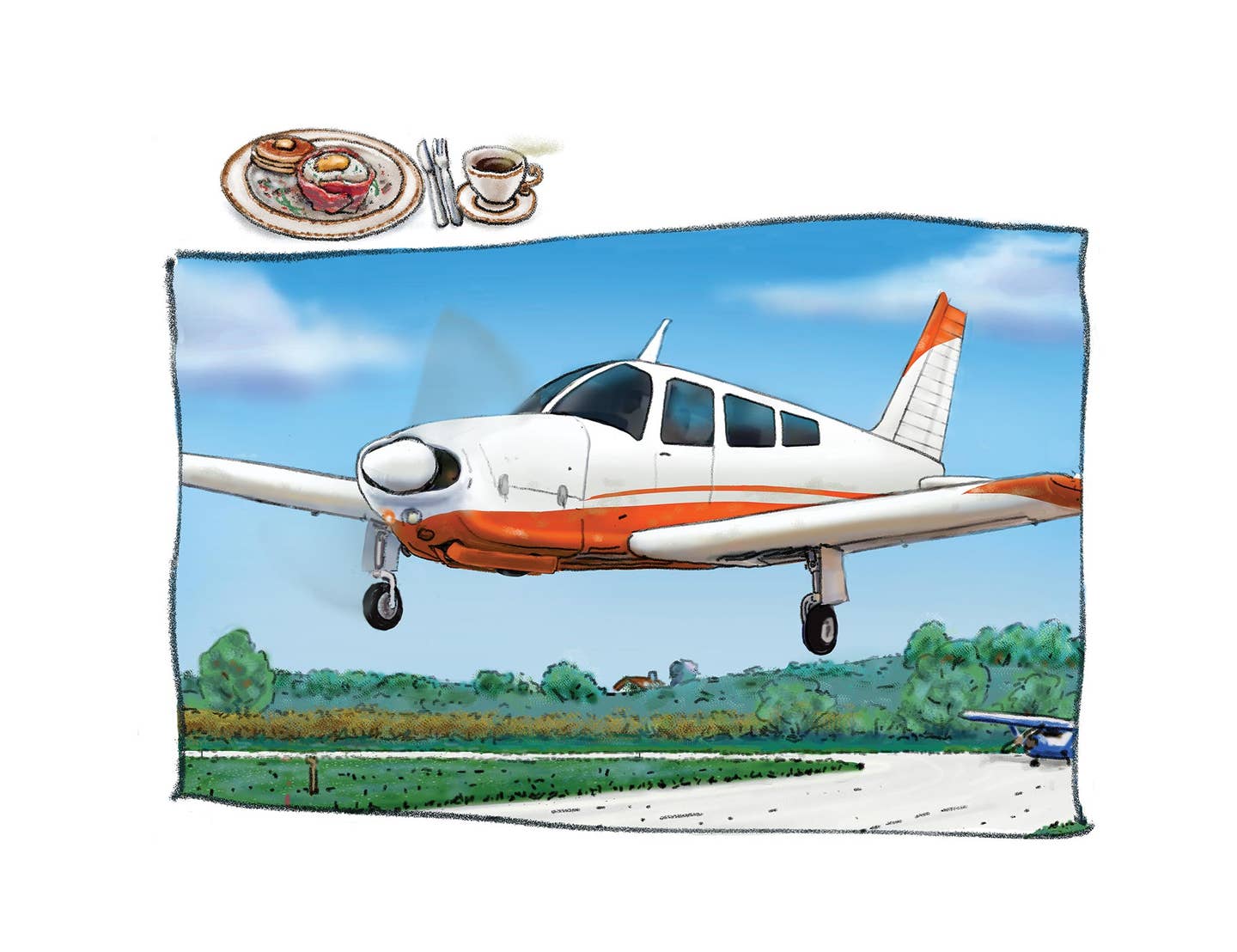
Illustration: Philippe Lechien
My friend Walt and I were due to fly his very nice Piper Arrow out for a Saturday breakfast—your basic $400 bacon and eggs
Walt was a relatively experienced pilot who came up through the Piper ranks. He trained in a Warrior, spent a lot of time in various forms of Archers and Cherokee 180s, and when the money allowed, he made his dream purchase—a 1978 Arrow III.
He loved that Arrow and spared no expense on its maintenance. The engine, a 200 hp Lycoming IO-360, was relatively new, as was the three-blade propeller. He’d had it painted only a few years before and had begun replacing the 1970s-vintage avionics with much more useful and reliable Garmin devices. He wasn’t in a position to tear out the whole panel and start fresh, but he was working down the list of wanna-haves.
Still being somewhat new to the Arrow, his insurance wasn’t cheap, and I knew from talking to him that the cost of ownership was often on his mind. He fretted about where to taxi the airplane at his home airport, which had a few taxiways that seemed to collect dirt and rocks. He gritted his teeth when other airplanes pulled out of transient parking without thinking about prop wash. He worried between the time he sent the oil sample for analysis and the report came back.
Walt wasn’t quite to the stage of worrying about every creak and rattle in his beloved Piper, which surprised me. It is almost 50 years old.
A few weeks before our flight, he had the landing gear serviced. Once or twice on previous flights, the gear wouldn’t fully retract. Once, the gear motor worked hard enough to pop the circuit breaker. He didn’t see that until he realized the climb performance was weak. Cycling the gear did the trick, but the problem stayed there, in the back of his mind.
My eyes were slightly glazed as Walt described the Arrow’s hydraulic gear system. An electric pump supplied hydraulic fluid to actuators at each gear leg. A series of switches and check valves made sure the gear motor only ran when needed. I understood that only trapped hydraulic pressure kept the gear retracted but that springs, gravity, and over-center links kept it down when it was supposed to be down. I drifted into thinking how simple my fixed-gear Cessna seemed by comparison, but I begrudged him the Arrow’s extra speed.
Walt was relaxed this morning, looking forward to a casual flight in perfect VFR conditions. I was looking forward to the pancakes. We departed his home field on the 5,000-foot runway. Since it was just us and only 50 of the 72 gallons on board, we were light enough to make the Arrow’s performance seem impressive.
Off the runway, the VSI indicating a climb, Walt reached for the switch to raise the gear. We heard the pump go to work, the airplane yaw slightly as the mains started up (not exactly in sync), and as I was watching the countryside fall away beneath us, I heard Walt exhale sharply.
“Damn.” Pointing at the yellow “GEAR UNSAFE” light on the panel, he said, “The gear’s not coming up. All three green lights are out, so the gear isn’t down, but it’s not up, either.”
Walt sat frozen for a moment before choosing a course of action. “I’m going to keep the speed low, extend the gear again, and try retracting one more time.” He glanced at me as he said this. His look said it all: This again!
He kept the speed down—while the Arrow can be flown as fast as 129 kias with the gear down (and you can extend it up to that speed as well) the max gear retraction speed is 107 kias. He dropped the gear lever and all three wheels extended from their wells, three green lights illuminated. So far, so good.
Once more on the retraction cycle. Same result. The GEAR UNSAFE light remained stubbornly lit. Without being able to see the gear, we didn’t know if it was nearly home or just barely retracted.
“I don’t like this,” Walt said, sounding concerned. “We’re close to home. I think we should cancel the breakfast and get back on the ground.” I was thinking the same thing.
We hadn’t flown far from the home strip, so he decided to get the gear back down right away, rather than flying outbound and then lowering it somewhere on the reentry to the pattern. It was a good choice.
When Walt lowered the gear, the two mains came down, but there was no indication that the nosewheel had extended. Two out of three green lights won’t do it.
Walt offered a short stream of expletives.
I could see him unraveling. He stared at the lights, looked at the panel. Our speed and altitude were starting to drift. I wanted to break the spell, but it was his airplane and he has a strong personality. We were friends but not best friends. I wasn’t sure where to begin.
Soon, though, I said, “OK. Let’s stop trying to cycle the gear. What does the book say about emergency gear extension?” I wasn’t sure he heard me, but then he seemed to snap out of it.
“Yeah, right,” he said. “We need to slow to 87 knots and we can push this lever here,” he said, pointing to the release lever between the seats. “And the gear will free fall.”
“Let’s do that,” I said.
Walt trimmed for 85 knots and we watched for a light. Nothing.
“Slower,” I said. “I remember seeing that the nosewheel travels forward. Maybe the slipstream is keeping it from falling into the downlock.”
Walt dropped a notch of flaps and gradually reduced speed. I watched the airspeed indicator carefully while he was looking at the gear lights ahead of his right knee. Eighty knots, nothing. Seventy-five, nothing. Then, with a subtle clunk, the nose gear locked into place.
I felt a moment of elation, but Walt was still completely preoccupied. “OK, Walt. Let’s turn it back to the airport,” I offered, hoping to break the trance. He sat there for a moment, looking outside, then down at the gear handle, then outside again.
“C’mon, Walt. Let’s go.” He seemed to snap out of it for a moment but had difficulty figuring out how to get back to the strip. Fortunately, he has the same GPS as I do, so finding the nearest airport and plugging in a direct-to wasn’t hard. I pointed at the HSI, “That’s the direction. Let’s go.”
Walt seemed to come back to his normal self through the 45-degree entry, and all seemed well on the downwind. I realized my own palms were sweaty but was grateful that Walt was coming around. I’d never landed from the right seat, and my total Piper time was barely double digits. If I were called on to take over, it might not be pretty.
This was running through my head as he turned final. The speed and descent rate looked about right to me, but what did I know of Pipers?
Then, at about 10 or 15 feet, he began flaring. At first I wondered if a “pre-flare” was normal in Arrows, but it very quickly became clear as the nose kept rising that he had utterly misjudged the height above ground.
I barely got out a “too high, too high” before the stall warning blared, and the poor Piper fell gracelessly to the pavement.
We weren’t done.
Soon after the mains pounded the runway, the nose came through with a bang, forcing us back up again. We must have had enough energy to fly, because that poor Arrow survived two full porpoising cycles before it gave up the fight.
We taxied back to the hangar in total silence as I reran the last few seconds in my head. To my horror, I realized that I had frozen too. I could see the bad flare coming and barely alerted him. Walt had definitely frozen. I closed my eyes to see if I could remember the yoke moving or him reaching for the throttle. Nothing. And nothing from me.
I sat there, a useless pilot-passenger. Might as well have been a sack of potatoes.
I truly don’t know if yelling “power, power” or trying to take over the controls would have been a better response than nothing. Two pilots fighting over control of the airplane rarely has a good outcome. Even so, I resolved then and there to not be passive when I see a bad situation unfolding.
Walt later confessed to being totally task-saturated, with the “landing” only really breaking through at the end of the last porpoise. We never talked about it, but I did see him for a few weekends after that pounding around the pattern, making really nice landings.
But, hey, at least the nose gear really was down.
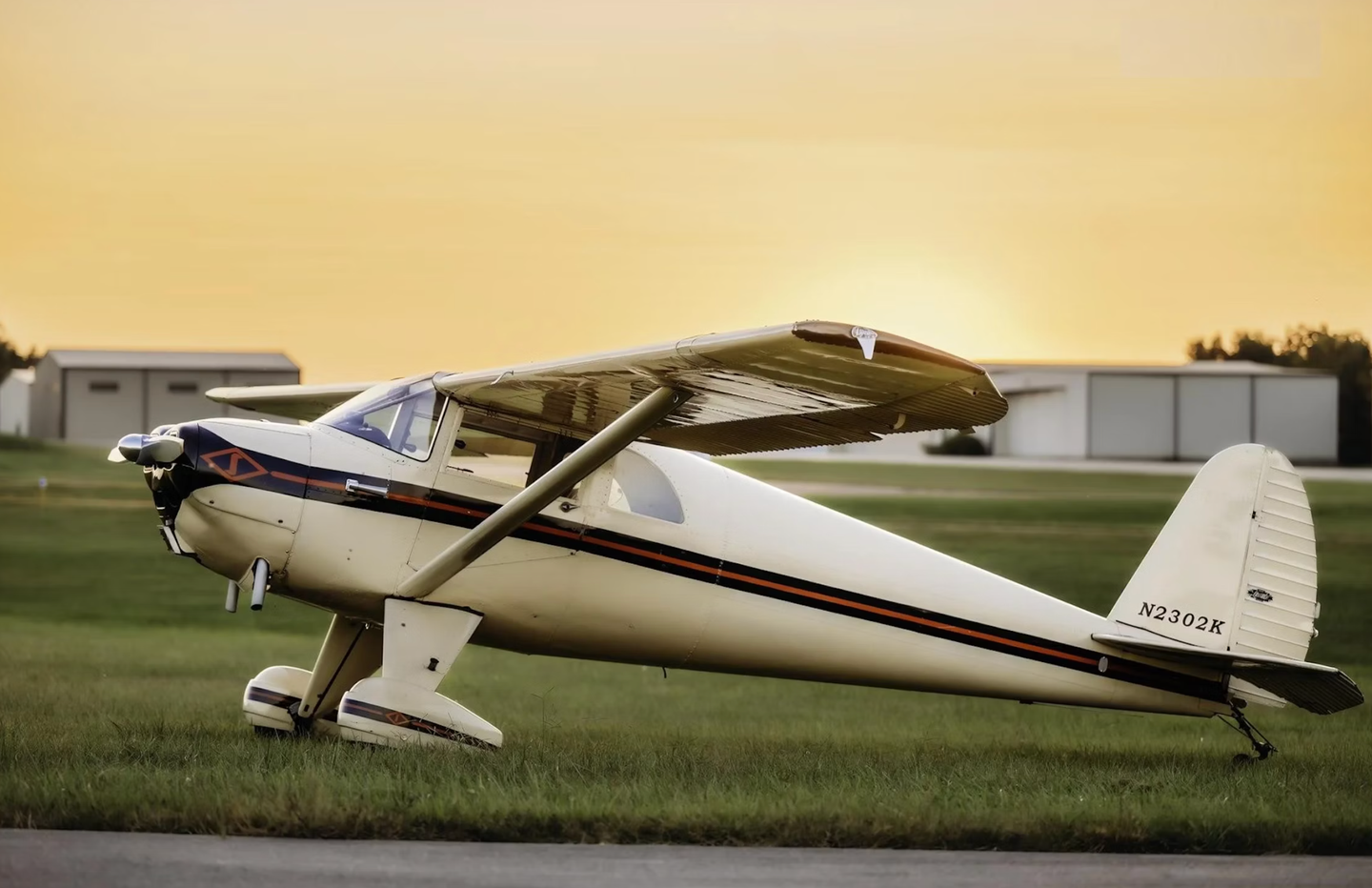
Subscribe to Our Newsletter
Get the latest Plane & Pilot Magazine stories delivered directly to your inbox

